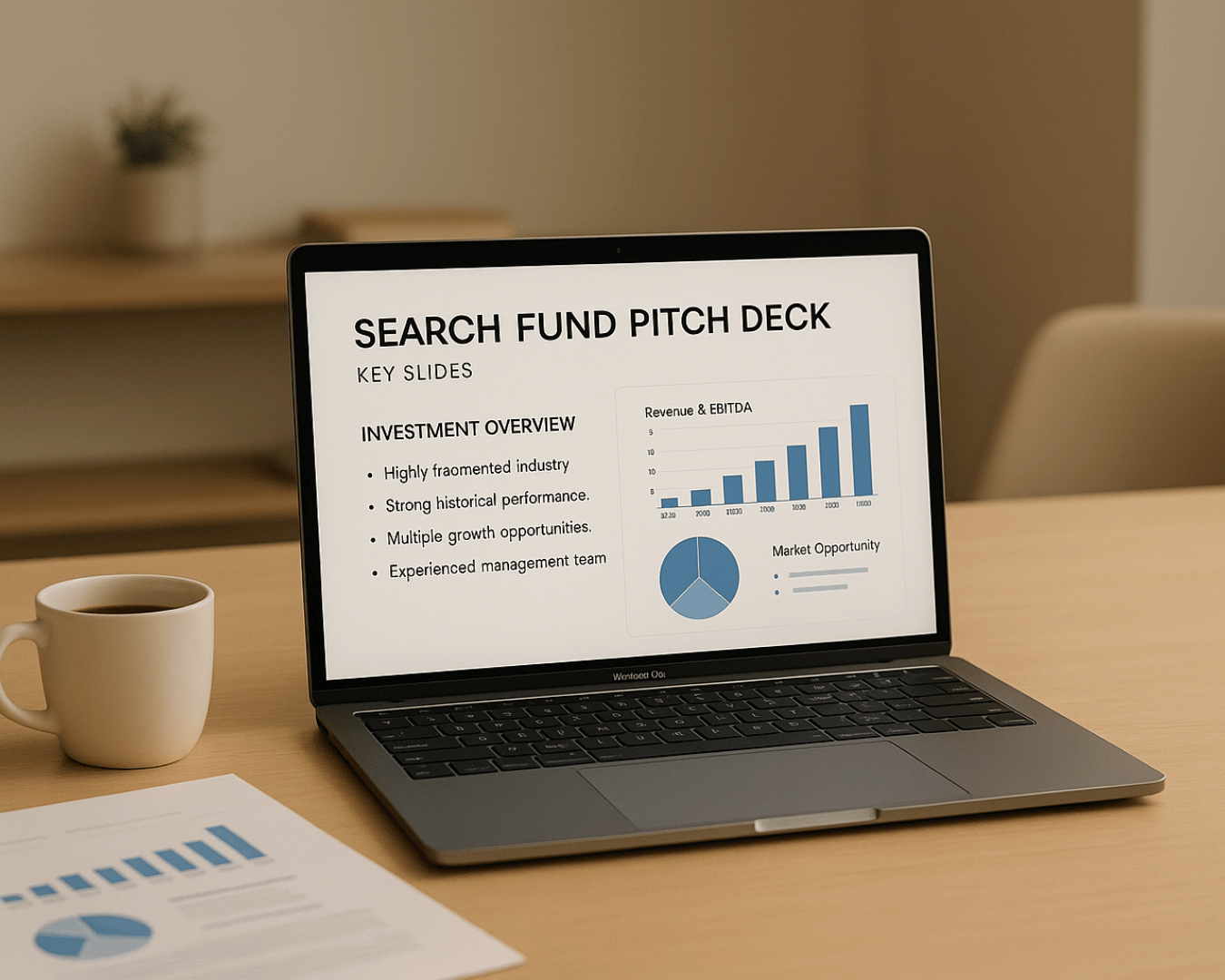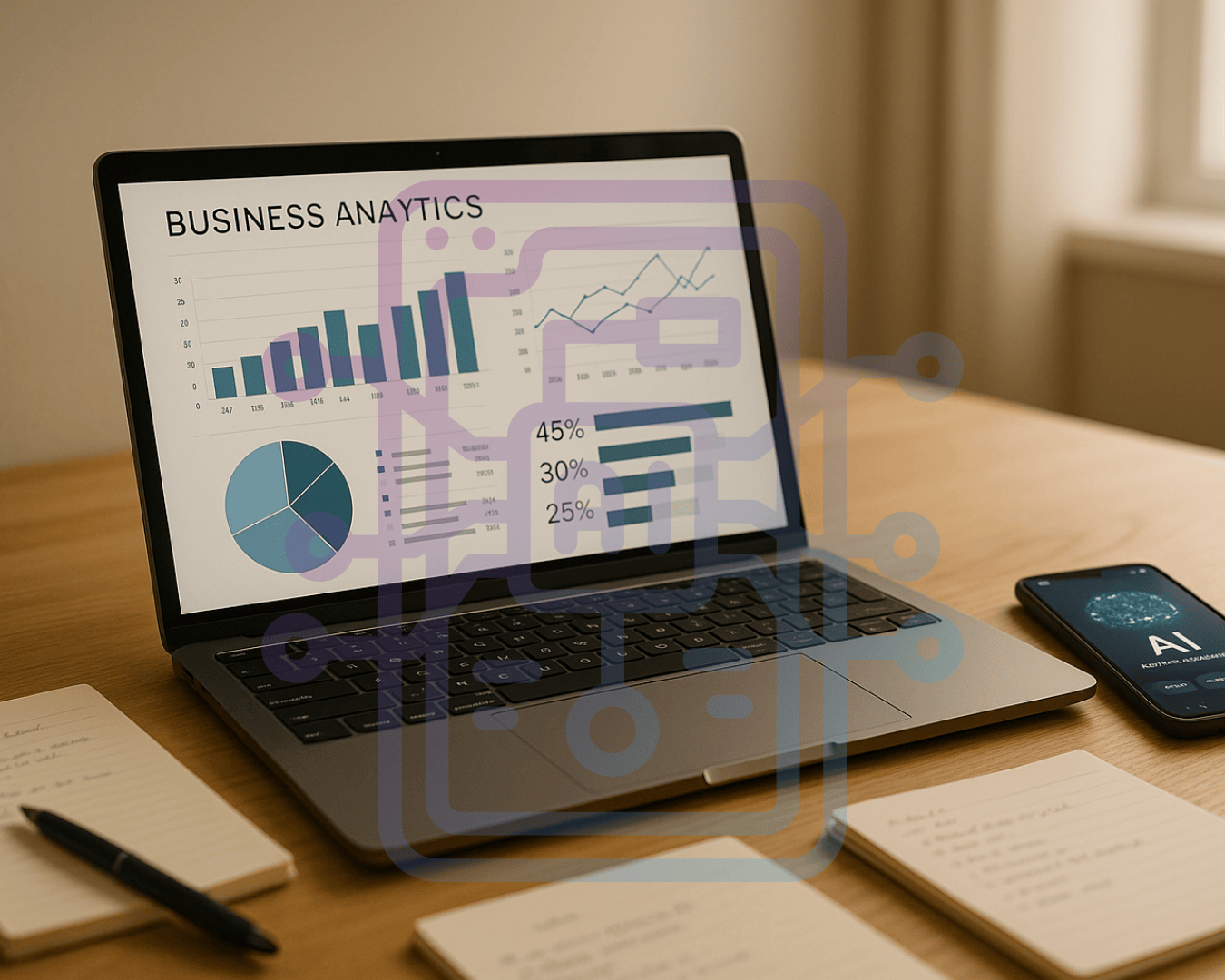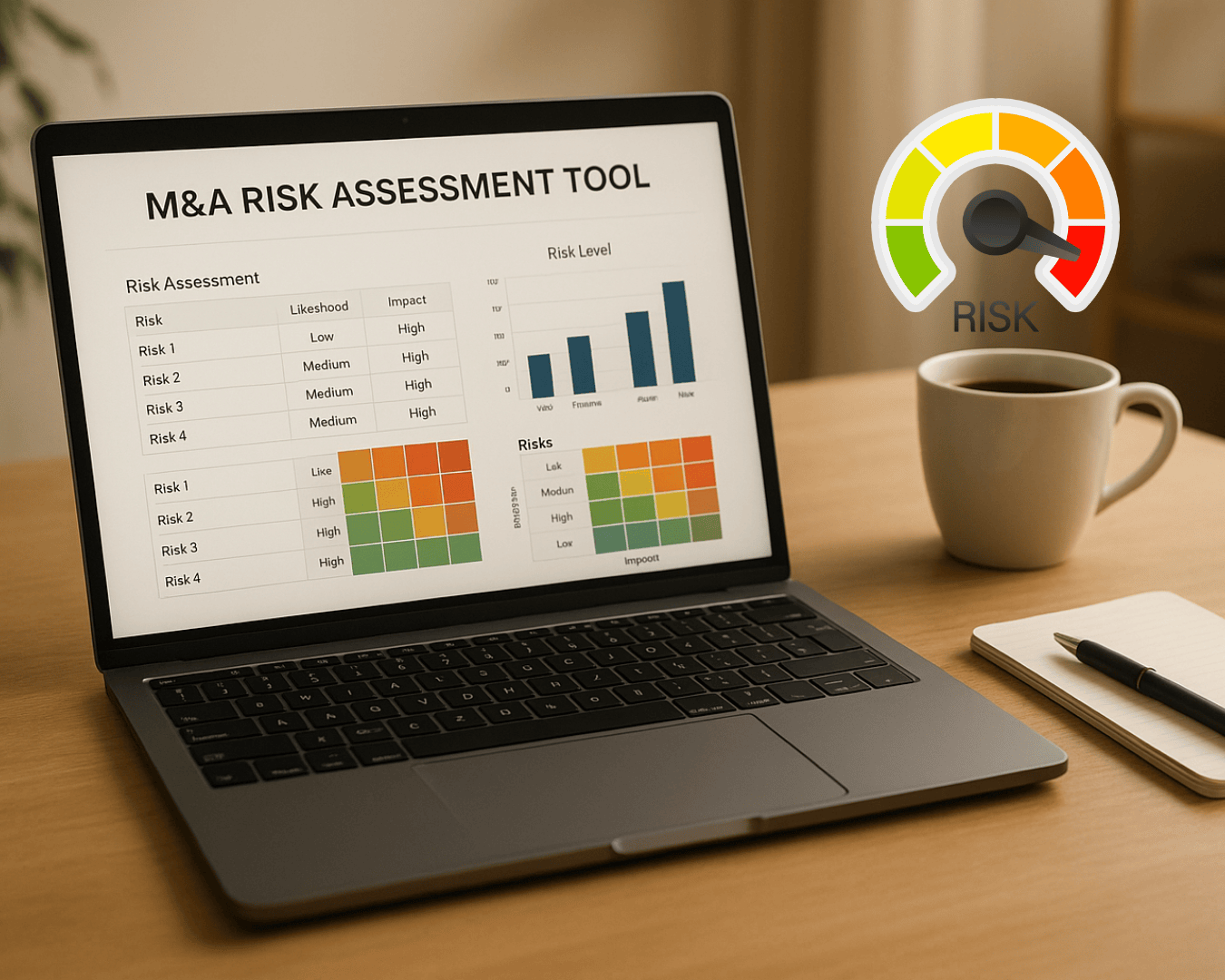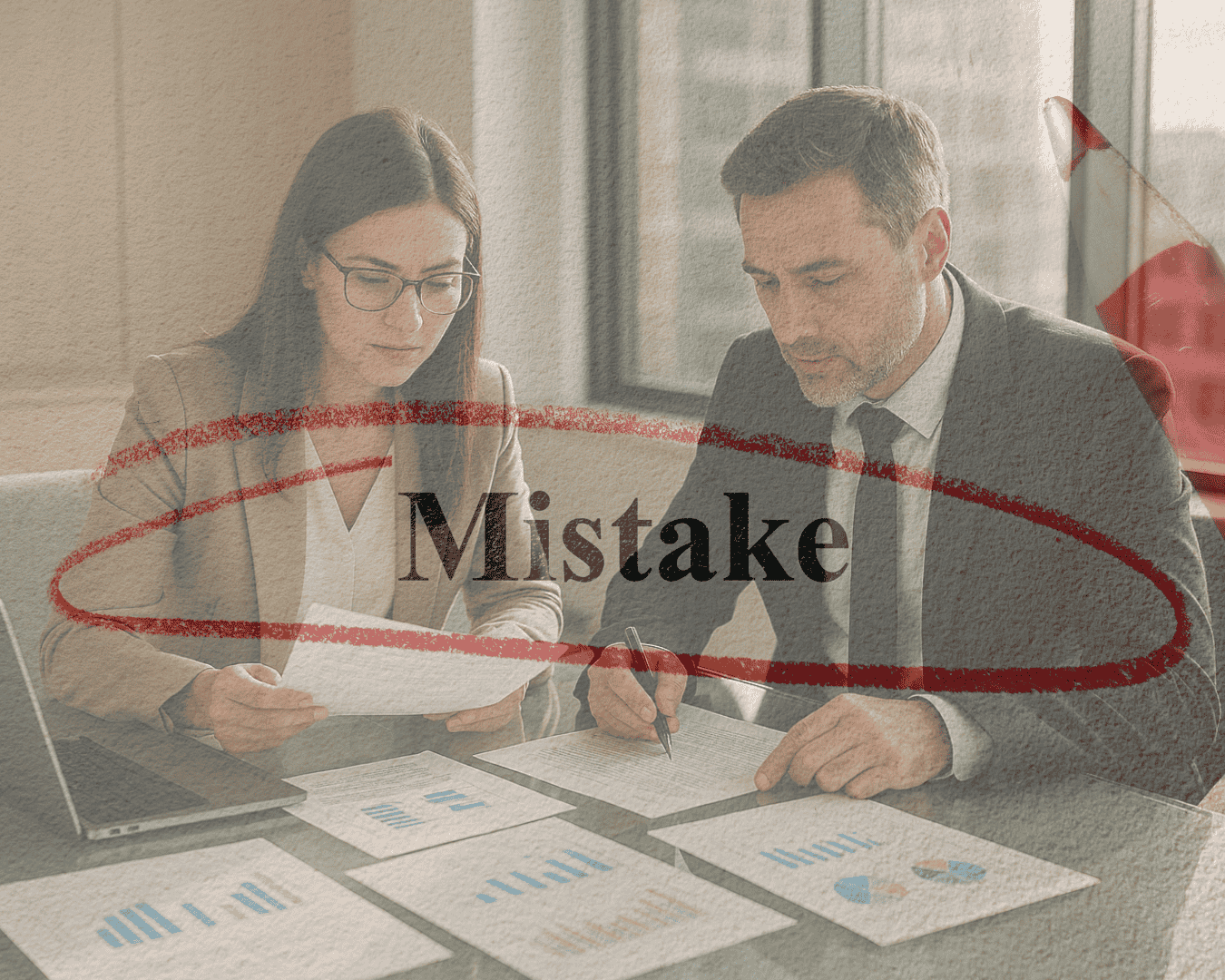In 2025, small and medium-sized business (SMB) acquisitions are thriving across five high-growth industries. Here's a quick breakdown:
- AI and Automation Services: Businesses are adopting AI to streamline workflows, driving profitability and recurring revenue. Initial costs are moderate, with high scalability.
- Digital Health and Telemedicine: Virtual healthcare continues to grow, offering cost-effective services and subscription-based models. Startup costs vary but are manageable.
- E-Commerce and Online Retail: Online shopping is booming, with mobile and social commerce leading growth. Entry costs are relatively low, and scalability is strong.
- Green and Clean Energy Services: Renewables like solar and battery storage are expanding. Higher upfront investment is offset by long-term demand and incentives.
- Professional and Technical Services: Low startup costs and steady demand for specialized skills make this sector attractive, with strong recurring revenue opportunities.
Each of these sectors offers a mix of growth potential, profitability, and varying capital requirements. Whether you're looking for cutting-edge tech, healthcare innovation, retail opportunities, renewable energy, or professional services, 2025 is a promising year for SMB acquisitions.
The “Best” Businesses to Start To Buy in 2025 {Backed By Data}
1. AI and Automation Services
AI and automation are revolutionizing how small and medium-sized businesses (SMBs) operate, driving the next wave of digital transformation. By 2025, the demand for AI and automation services among SMBs is set to skyrocket. What started as simple task automation has evolved into sophisticated, workflow-oriented solutions that deliver measurable results.
Market Trends and Growth Potential
The AI market is on a steep growth trajectory, with projections estimating it will exceed $1.8 trillion by 2030. Currently, 82% of businesses worldwide are either using AI or actively exploring ways to implement it. For SMBs, this trend is especially promising, as the AI-driven job market is expected to grow by 38% annually between 2024 and 2030.
A major shift is underway in how AI is being adopted. CTO Glyn Roberts of Vention explains:
"We can see that AI investment is currently concentrated within larger enterprises. However, this landscape is poised to shift, with AI availability and investment becoming more diverse and distributed across a wider range of companies. As AI technology continues to mature, we anticipate increased adoption and innovation from organizations of all sizes."
Businesses are moving beyond generic automation and focusing on fine-tuning AI for high-friction workflows. This creates opportunities for service providers who specialize in addressing specific industry challenges. With this shift, AI adoption is expected to drive significant innovation and profitability across businesses of all sizes.
Profitability and Recurring Revenue Opportunities
The financial upside of AI adoption is hard to ignore. Businesses leveraging AI are forecasted to see a 38% boost in profitability by 2025. This opens up multiple revenue streams for service providers, including system implementation, training, ongoing support, and optimization.
One of the most attractive aspects of this sector is its strong recurring revenue potential. AI systems require regular monitoring, updates, and fine-tuning to remain effective. In 2024, 72% of companies globally reported using AI in at least one area of their operations. These deployments often include long-term support contracts, ensuring steady, predictable income for providers.
Initial Capital Requirements
Launching an AI or automation service business typically doesn’t demand massive upfront investments. Most of the initial costs are tied to hiring skilled professionals, software licenses, and marketing efforts, rather than physical infrastructure. By focusing on niche markets, businesses can develop deep expertise and stand out in a competitive landscape. As of 2028, 60% of companies globally are expected to require employees to have basic AI skills, creating a growing demand for specialized training and consulting services.
Scalability and Long-term Viability
AI solutions are highly scalable, offering immense potential for growth. Once developed, these solutions can be adapted and replicated across multiple clients with minimal additional costs. Expertise becomes a valuable, reusable asset.
AI’s scalability and profitability explain why 85% of C-suite executives view it as a key growth driver. By 2030, AI is expected to contribute $2 trillion to the global economy through better customer insights, improved efficiency, and innovative investment strategies.
Pavel Nekrasov, AI Group Manager at Vention, highlights the transformative power of AI:
"AI, like any technology, is a tool. When used professionally, it enhances quality and boosts efficiency. For example, in healthcare - one of the most sensitive fields - we help our clients implement solutions that improve operational quality, reduce time and costs, and ultimately enhance patient recovery."
AI’s impact isn’t limited to efficiency gains. It’s also reshaping the job market. By 2025, AI is projected to replace 16% of existing jobs globally while simultaneously creating 9% new roles. This dynamic shift underscores the long-term viability and transformative potential of AI and automation services.
2. Digital Health and Telemedicine
With advancements in AI and automation, digital health has emerged as a game-changer, transitioning from a pandemic-driven necessity to a scalable and permanent healthcare solution. Telemedicine, in particular, offers exciting acquisition opportunities as we move into 2025.
Market Trends and Growth Potential
The global digital health market is forecasted to grow from $427.24 billion in 2025 to $1.5 trillion by 2032, with an impressive annual growth rate of 19.7%. Similarly, telehealth is expected to expand from $146.9 billion to $251.5 billion by 2030, growing at 11.3% annually.
Virtual healthcare has seen a massive shift in recent years. Virtual visits, for instance, increased from just 0.1% in 2019 to 17% in 2023, with 80% of patients expressing a preference for virtual consultations for non-urgent medical needs.
Several key factors are driving this growth:
- Direct-to-consumer (DTC) telehealth services are projected to grow by 15% annually in 2025.
- 80% of healthcare organizations have increased their health IT budgets over the past year.
- The adoption of wearable devices, remote monitoring tools, and AI-powered diagnostics is expanding the range of services digital healthcare can provide.
"Telehealth is no longer just a pandemic-era solution - it's a cornerstone of modern healthcare. With increased investment, enhanced cybersecurity measures, evolving policies, and innovative care models, telehealth in 2025 is poised to break new ground. However, challenges like licensure barriers and the expiration of critical waivers must be addressed to ensure equitable access for all."
The rapid expansion of this sector highlights its potential for profitability and long-term growth.
Profitability and Recurring Revenue Opportunities
Telehealth offers significant cost advantages. Patients typically spend $40–$50 per virtual visit, compared to $136–$176 for in-person appointments. On the provider side, practices save about $24 per patient in overhead costs for each telehealth visit. Telemedicine professionals also benefit, with physicians earning $100–$150 per hour and nurse practitioners making $60–$100 per hour. Standard consultation fees generally range between $75 and $85.
Subscription-based telehealth services stand out as a particularly appealing revenue model. These services provide predictable cash flow and increase customer lifetime value. For instance, an Asian hospital chain recently launched two subscription plans: one focused on virtual check-ins and chronic condition coaching, and another offering access to digital resources and expert webinars.
Revenue models in this field vary:
| Service Mix | Revenue Stability | Typical Valuation Multiple |
|---|---|---|
| Mostly Recurring Subscriptions | High | Higher (5–6× SDE) |
| Balanced (Subscriptions + On-Demand) | Moderate | Moderate–Higher (4–5× SDE) |
| Mostly On-Demand Consultations | Lower | Lower (3–4× SDE) |
These models not only promise profitability but also require relatively modest startup costs.
Initial Capital Requirements
Launching a telemedicine business can cost anywhere from $10,000 to $250,000, depending on the platform's complexity and scope. Here’s a breakdown of typical expenses:
- Technology platform: $10,000–$50,000
- Legal and professional services: $30,000–$40,000
- Website development and marketing: $10,000–$20,000
- Ongoing costs: Licensing and malpractice insurance, with licensing fees averaging $1,000 per state and malpractice insurance costing around $24,000 per provider.
The barrier to entry has dropped significantly in recent years. Entrepreneurs can now adopt a Minimum Viable Product (MVP) approach, allowing them to test market demand before committing to larger investments. Previously, launching a telemedicine business required $80,000–$100,000 upfront; today, it’s possible to start with far less.
Scalability and Long-term Viability
Digital health businesses are highly scalable. Once a telehealth platform is operational, it can expand across state lines (with appropriate licensing), add new specialties, and incorporate services like remote monitoring or wellness coaching. Direct-to-consumer healthcare alone is expected to surpass $200 billion in market value.
Unlike broader automation trends, telehealth innovations directly address patient access and operational efficiency. Specialized virtual care is particularly lucrative, as premium pricing can be charged for niche services.
The integration of technologies like 5G, IoT, and AI diagnostics further enhances the scalability of digital health platforms. Expanding into new specialties and regions positions this sector for sustained growth, making it a compelling investment opportunity for 2025.
3. E-Commerce and Online Retail
The world of e-commerce is evolving at lightning speed, offering exciting opportunities for small business buyers. Online businesses bring scalability, automation, and global reach to the table, making them an attractive option for acquisition in 2025. This dynamic growth is paving the way for new revenue models and market expansion.
Market Trends and Growth Potential
E-commerce is booming. By 2025, global sales are expected to soar past $6.8 trillion, with 21% of all retail purchases happening online and a staggering 2.77 billion shoppers worldwide. Mobile commerce and social media are key drivers of this growth. Mobile e-commerce alone is predicted to hit $2.51 trillion in 2025, while social commerce could reach $2.9 trillion by 2026. Shoppers are also embracing technological advancements - 70% anticipate shopping primarily through social media by 2030, and 7 out of 10 want AI-powered shopping experiences.
Several emerging trends are shaping the industry:
- AI and Machine Learning: Transforming personalization, fraud detection, and supply chain management.
- Subscription Models: Gaining popularity as customers prioritize convenience and tailored experiences.
- Augmented Reality (AR): Bridging the gap between online and in-store shopping.
- Voice Search: Growing alongside the adoption of smart speakers.
"It's important to recognize that there isn't just one type of online shopper or one type of market... Our E-Commerce Trends Report analyzes the trends and developments shaping online shopping worldwide to help our customers grow their businesses."
- Pablo Ciano, CEO of DHL eCommerce
These trends not only drive sales but also bolster profit margins, making e-commerce a lucrative industry.
Profitability and Recurring Revenue Opportunities
E-commerce businesses are highly profitable. In Q4 2024, the industry reported a 47.05% gross margin, with a trailing twelve months (TTM) gross margin of 48.47%. Net margins were also solid at 10.56% for the quarter and 9.2% TTM.
The growth outlook is equally promising. The U.S. e-commerce sector alone is expected to grow by 53% by 2027, while global retail e-commerce sales are projected to hit $8.1 trillion by 2026. Mobile optimization plays a big role in this expansion - smartphones accounted for 77% of retail site traffic globally in Q3 2024, generating 68% of online shopping orders.
Recurring revenue models, like subscriptions and memberships, are particularly appealing. They enhance customer retention and create predictable cash flow. Direct-to-consumer (DTC) sales, on the other hand, allow businesses to cut out middlemen, boosting profit margins while fostering closer customer relationships.
Initial Capital Requirements
Starting an e-commerce business requires an initial investment ranging from $5,000 to over $50,000, depending on the scale of operations. A moderate launch with a broader product lineup and marketing strategy might cost between $10,000 and $30,000, while a fully developed operation with advanced marketing and a full team could exceed $50,000.
Here’s how first-year spending typically breaks down:
| Expense Category | Percentage of First-Year Spending |
|---|---|
| Product Costs | 31.6% |
| Team Costs | 18.8% |
| Offline Costs | 10.5% |
| Marketing Costs | 10.3% |
| Online Costs | 9% |
| Shipping Costs | 8.7% |
| Operating Costs | 11% |
Subscription plans for e-commerce platforms generally start at $25 to $30 per month when billed annually. Dropshipping models can lower upfront costs compared to businesses that manufacture and store their own inventory.
"Product quality is critical because a good product sells itself. When you marry a great product with an audience who's hungry for it, your marketing becomes 10 times easier."
- Eric Even Haim, CEO of ReConvert
Scalability and Long-Term Viability
While startup costs are important, the ability to scale is what sets e-commerce apart. Acquiring an established online business provides access to proven revenue models and a loyal customer base, all of which align with current market trends. Global e-commerce sales are expected to surpass $8 trillion by 2027, building on $4.65 trillion in 2023, which marked a 9.2% year-over-year increase. By the end of 2024, sales are projected to grow to $5.14 trillion, reflecting a growth rate of 10.4%.
Scaling is also more cost-effective than acquiring new customers, as retaining an existing customer is five to seven times cheaper. However, success depends on operational efficiency - 53% of mobile users abandon websites that take longer than three seconds to load.
Key strategies for scaling include:
- Automation: Reduces manual work, minimizes errors, and cuts operational costs.
- Multi-Channel Marketing: Expands reach by targeting customers across various platforms.
- Website Optimization: Ensures the site can handle increased traffic without compromising user experience.
"Ensuring scalability often means getting your systems, processes and business model prepared for growth from day one. This includes standardized procedures, tech enablement and a focus on markets where demand can multiply without hitting resource bottlenecks."
- Niclas Schlopsna, Managing Consultant and CEO
For small business buyers, e-commerce offers the chance to acquire businesses with established growth mechanisms, loyal customers, and scalable revenue models that can thrive across different markets and channels.
4. Green and Clean Energy Services
The green and clean energy industry is booming, positioning itself as one of the most attractive sectors for small business buyers in 2025. With demand for clean energy outpacing supply and substantial investments fueling advancements, this market offers exciting opportunities for growth and innovation.
Market Trends and Growth Potential
In the first nine months of 2024, utility-scale solar and wind projects made up nearly 90% of new energy capacity. Solar alone surged by 88%, reaching 18.6 GW, while battery storage grew by 64% during the same period. Cleantech investments hit a record $71 billion in the third quarter of 2024, underscoring the sector’s momentum and potential for steady revenue.
Several factors are driving this growth. Cleantech manufacturing, data centers, and direct air capture (DAC) operators are fueling demand. Data centers, for example, are expected to require an additional 44 GW of energy by 2030. In a notable move, Meta signed a geothermal energy deal in August 2024 to power its U.S. data centers, showcasing how major tech companies are leading the charge toward clean energy adoption.
Government policies are another key driver. The Inflation Reduction Act (IRA), with its industrial policy goals, is shaping a stable, long-term outlook for renewables. By 2025, renewable electricity is projected to surpass coal power, accounting for 35% of global electricity supply. Meanwhile, innovations like green hydrogen, long-duration energy storage, advanced solar cells, and enhanced geothermal systems are creating new opportunities, including solutions that address the challenge of intermittent energy supply.
Profitability and Recurring Revenue Opportunities
The sector’s growth translates into attractive profit margins and dependable income streams. In 2024, U.S. solar module manufacturing exceeded 50 GW, enough to meet all domestic solar demand. Clean energy jobs are expanding at twice the rate of overall employment, with energy construction jobs growing at a similar pace compared to other construction roles. Residential solar adoption is also climbing, with attachment rates expected to jump from 14% in 2023 to 25% in 2024.
Carbon management through voluntary offset markets presents another opportunity for revenue. Service-based businesses can tap into the rising demand for 24/7 clean energy, particularly from sectors like cleantech manufacturing, data centers, and DAC operations.
Initial Capital Requirements
Starting a business in this sector can range from tens of thousands to millions of dollars, depending on the scope of the project. Equipment and licensing costs are often the largest expenses. However, several financing options can help manage these upfront costs.
Green banks provide tailored financing solutions for clean energy projects. These institutions - public, quasi-public, or nonprofit - blend public and private capital to fund emissions-reducing initiatives. As of 2021, 21 green banks across 16 states and Washington, D.C., had invested $7 billion since 2011. The Inflation Reduction Act also established a $27 billion Greenhouse Gas Reduction Fund to encourage private investment in emissions-reducing projects.
"Green banks... leverage public and private capital to pursue goals for clean energy projects that reduce emissions." – US EPA
To further lower costs, it’s crucial to research local regulations, create a focused business plan, and explore grants or subsidies.
Scalability and Long-Term Viability
The green energy sector is primed for scalability. Solar PV alone is projected to meet about half of the global electricity demand growth in 2024 and 2025. Domestic renewable supply chains, AI-driven operational efficiencies, and carbon credit monetization are expanding opportunities for businesses to scale.
Companies can grow by targeting high-demand areas like cleantech manufacturing, data centers, and DAC plants. Offering integrated solutions, such as renewable energy systems paired with battery storage for reliable 24/7 power, can open lucrative market segments. Distributed solar and battery storage systems tailored to data centers in grid-constrained areas also present promising opportunities. Additionally, workforce development - focusing on digital skills, project management, and emerging technologies - can generate recurring revenue through training services.
For small and medium-sized business buyers, the clean energy sector offers a rare combination of strong market fundamentals, supportive government initiatives, and cutting-edge technology. With the world moving decisively toward a cleaner energy future, this industry provides a solid foundation for resilient and forward-thinking investments in 2025.
sbb-itb-a3ef7c1
5. Professional and Technical Services
The professional and technical services sector is shaping up to be a promising area for small and medium-sized business (SMB) buyers in 2025. This industry includes a wide range of professionals such as attorneys, accountants, architects, engineers, IT specialists, consultants, researchers, photographers, translators, veterinarians, and more. What makes this sector appealing is its relatively low startup costs, consistent demand for specialized skills, and the potential for steady, recurring revenue. Alongside the booming tech and green energy industries, professional and technical services offer a reliable foundation in the changing SMB landscape.
Market Trends and Growth Potential
Digital transformation and hybrid consulting models are fueling growth in this sector. For example, the global market for environmental, social, and governance (ESG) consulting is expected to surpass $48 billion by 2025, reflecting the growing interest in ethical business practices and sustainability.
Technology spending is also on the rise among SMBs, with nearly two-thirds planning to allocate between $25,000 and $1 million on tech this year. Gartner forecasts a 9.8% increase in IT spending by SMBs, creating significant opportunities for technical service providers to meet this growing demand.
"Today's SMBs are prioritizing growth, operational efficiency and increasingly AI... And with 80% of SMBs acknowledging they have 'some or a lot of room' for improvement with respect to vision and strategy for use of tech, the time is now for IT service professionals (ITSPs) to step in and get IT done right." - Carolyn April, vice president of research and market intelligence, GTIA
Hybrid consulting models, which blend in-person and remote services, are becoming the norm. This approach, driven by evolving workplace habits, allows firms to reach more clients while keeping costs down. Additionally, as businesses expand into international markets, they increasingly rely on experts to navigate complex regulations and global operations.
Profitability and Recurring Revenue Opportunities
Professional and technical services are known for their strong profit margins. Since these businesses are built around specialized expertise, they tend to have lower overhead costs and can command premium pricing. The focus on niche skills also creates natural barriers to entry, making it easier for established firms to maintain their market position.
Recurring revenue is a hallmark of this sector. Accountants often secure long-term clients for monthly bookkeeping, IT consultants provide ongoing system maintenance, and legal firms benefit from retainer agreements. This predictable income stream makes the industry particularly attractive to buyers looking for stable cash flow.
New revenue opportunities are emerging as businesses adopt data analytics and AI. Firms that integrate advanced analytics into their services - such as financial monitoring or strategic planning - can charge higher fees while delivering clear value to their clients. High-growth areas like sustainability consulting, cybersecurity, and digital transformation advisory services are also gaining traction, offering strong profit margins.
Initial Capital Requirements
One of the advantages of entering this field is the relatively low barrier to entry. Over 25% of firms in this sector started with $5,000 or less. While the average capital expenditure per firm was $48,373 in 2021, this figure includes larger companies with significant infrastructure investments.
Initial costs often involve professional certifications, licenses, and basic technology setups. Depending on the business model, service providers can choose to operate online, visit clients directly, or work from physical offices, with each option requiring different levels of investment.
For those looking to acquire existing businesses, financing options are plentiful. Small-business acquisitions grew 6.2% year-over-year in the first half of 2024, reflecting strong confidence from lenders. Buyers can explore SBA loans with favorable terms, including lower down payments, or opt for online lenders offering quick funding for acquisitions up to $500,000 with repayment terms of up to 84 months.
Scalability and Long-Term Viability
Professional and technical services are highly scalable. Because these businesses are expertise-driven, they can expand quickly without the need for substantial physical infrastructure. Growth can come from hiring additional specialists, broadening service offerings, or leveraging technology to serve more clients efficiently.
The sector's emphasis on continuous learning and staying up-to-date with new technologies ensures its long-term relevance. As businesses increasingly focus on efficiency and AI integration, the demand for expert guidance will only grow. This adaptability helps shield the industry from becoming obsolete.
Flexible working arrangements and talent development have also become key factors in attracting top professionals while keeping costs competitive. The hybrid service delivery model allows firms to serve clients in multiple locations without needing to establish physical offices everywhere.
For SMB buyers, professional and technical services offer an appealing mix of low entry costs, high profit margins, and growth potential. The sector’s resilience in uncertain economic conditions and its consistent demand for specialized expertise make it a strong contender in the SMB acquisition market for 2025.
Industry Comparison Table
This table breaks down key business metrics for five industries, highlighting their potential trajectories by 2025.
| Industry | Revenue Growth (CAGR) | Average Profit Margins | Initial Capital Requirements | Growth Potential | Key Regulatory Factors |
|---|---|---|---|---|---|
| AI and Automation Services | 42.2% (2020–2027) | High (varies by niche) | Moderate | High | Data privacy and algorithmic bias regulations |
| Digital Health and Telemedicine | 22.4% (2021–2028) | 81% gross margin | Substantial | Very High | FDA compliance, HIPAA requirements, and telehealth licensing across states |
| E-Commerce and Online Retail | 14.7% (2021–2028) | Moderate | Lower | High | Sales tax compliance, consumer protection laws, and data privacy regulations |
| Green and Clean Energy Services | 6.1% (2021–2028) | Variable | Higher | Very High | Environmental regulations, renewable energy incentives, and grid connection requirements |
| Professional and Technical Services | 12–15% (estimated for tech-enabled services) | Robust | Low | Moderate to High | Professional licensing, industry-specific certifications, and data security compliance |
The table highlights some clear takeaways for investors and business owners:
- AI and Automation Services boasts the highest growth rate of 42.2%. However, emerging regulations around data privacy and algorithmic fairness could pose challenges.
- Digital Health and Telemedicine shines with impressive profit margins - 81% gross - while transitioning from a pandemic-driven necessity to a permanent healthcare solution. For instance, the sector generated $123.8 million in revenue during Q1 2025.
- Professional and Technical Services stands out for its low entry costs and strong margins, making it an appealing choice for first-time buyers or those with limited capital. Its expertise-driven nature ensures steady demand.
- Green and Clean Energy Services requires higher upfront investment but benefits from government incentives and growing consumer interest. While its growth rate is the lowest at 6.1%, renewable electricity capacity is projected to expand by over 60% by 2026, signaling strong short-term potential.
- E-Commerce and Online Retail offers a balanced approach with moderate capital needs and steady growth (14.7% CAGR). Innovations like social commerce and AI-driven recommendations continue to create opportunities in this maturing industry.
Given that 81% of small business owners report difficulty in accessing affordable capital, sectors like Professional and Technical Services and E-Commerce, which require less initial investment, may be more accessible. Meanwhile, the increasing adoption of generative AI - already used by 40% of businesses - is set to provide competitive advantages across all industries.
"Owning and operating a business is a challenge in the best of times, but American small business owners are struggling to navigate the uncertainty around important federal policies and our lack of access to affordable capital to grow."
- Jessica Johnson-Cope, Chair of 10,000 Small Businesses Voices National Leadership Council and President of Johnson Security Bureau, Inc.
For buyers exploring platforms like Clearly Acquired, these metrics serve as a roadmap. They help align investment strategies with growth potential, profitability, and capital requirements, catering to varying risk appetites and financial goals.
Conclusion
As we look ahead to 2025, sectors like AI and Automation, Digital Health, E-Commerce, Green Energy, and Professional Services present exciting opportunities for small and medium business (SMB) acquisitions. Each of these industries is shaped by growing demand and advancements, making them prime targets for focused M&A strategies.
The increasing emphasis on mergers and acquisitions, paired with rising technology investments, highlights the importance of acquiring businesses with steady cash flow and efficient operations.
"Today's SMBs are prioritizing growth, operational efficiency and increasingly AI." - Carolyn April, vice president of research and market intelligence, GTIA
Buyers should focus on companies with strong financials and a solid environmental, social, and governance (ESG) profile. This is especially crucial as 70% of M&A executives now prioritize ESG considerations. Industries like green energy and digital health are particularly aligned with these values, given their emphasis on environmental and social impact.
In this rapidly changing environment, Clearly Acquired simplifies the acquisition process by providing access to verified opportunities and tailored financing solutions, making it easier for buyers to act decisively.
With evolving market dynamics and robust M&A activity, the landscape is ripe for strategic acquisitions. Success will depend on targeting businesses with clean financial records, clear paths to profitability, and alignment with the technological and regulatory trends shaping 2025.
FAQs
What is driving the growth of the AI and Automation Services industry for small business buyers in 2025?
The AI and Automation Services industry is thriving among small businesses in 2025, offering a powerful way to drive revenue growth and streamline operations. Research highlights that 91% of small businesses using AI have experienced revenue increases, while 90% have reported enhanced operational efficiency. These tools are quickly becoming indispensable for businesses aiming to scale effectively.
By 2025, nearly 80% of small businesses are expected to adopt AI-driven tools, such as chatbots, underscoring the rising demand for automation. With the market forecasted to hit $407 billion by 2027, growing at an impressive annual rate of 36.2%, this sector offers exciting opportunities for profitability and long-term growth.
What strategies can SMB buyers use to manage funding needs and scale successfully in the Digital Health and Telemedicine industry?
Small and medium-sized businesses (SMBs) aiming to thrive in the Digital Health and Telemedicine space can address funding and growth challenges by considering flexible financing solutions. Options like forming strategic partnerships, securing SBA loans, or seeking equity investments can provide the necessary capital to launch or expand operations while keeping financial pressure manageable.
When it comes to scaling, leveraging cost-effective digital tools that work across different healthcare settings is key. A phased growth approach can make a big difference - start with pilot programs to test your strategies, make improvements, and ensure everything runs smoothly before scaling up. Additionally, engaging with regulatory bodies early in the process can help streamline compliance and avoid unexpected roadblocks.
By blending smart funding methods, adaptable technology, and a thoughtful, step-by-step growth plan, SMBs can set themselves up for lasting success in this rapidly evolving industry.
What key regulations should SMB buyers consider when entering the Green and Clean Energy Services industry?
Regulatory Considerations for Small Businesses in Green Energy
Small business owners venturing into the U.S. Green and Clean Energy Services sector need to keep several regulatory factors in mind. At the federal level, incentives such as tax credits and grants play a crucial role in shaping opportunities. Meanwhile, state-specific renewable portfolio standards and local green energy policies add another layer of complexity. These regulations can vary widely depending on the region, directly influencing project costs, timelines, and overall profitability.
On top of that, businesses must adapt to changing environmental standards and maintain clear, consistent communication with regulatory agencies. This proactive approach helps ensure operations run smoothly. Keeping up with these policies is not just a legal requirement - it’s a critical step for navigating the industry and unlocking growth potential.










.png)







































.png)








































%20Loan%20Application%20Checklist.png)


















